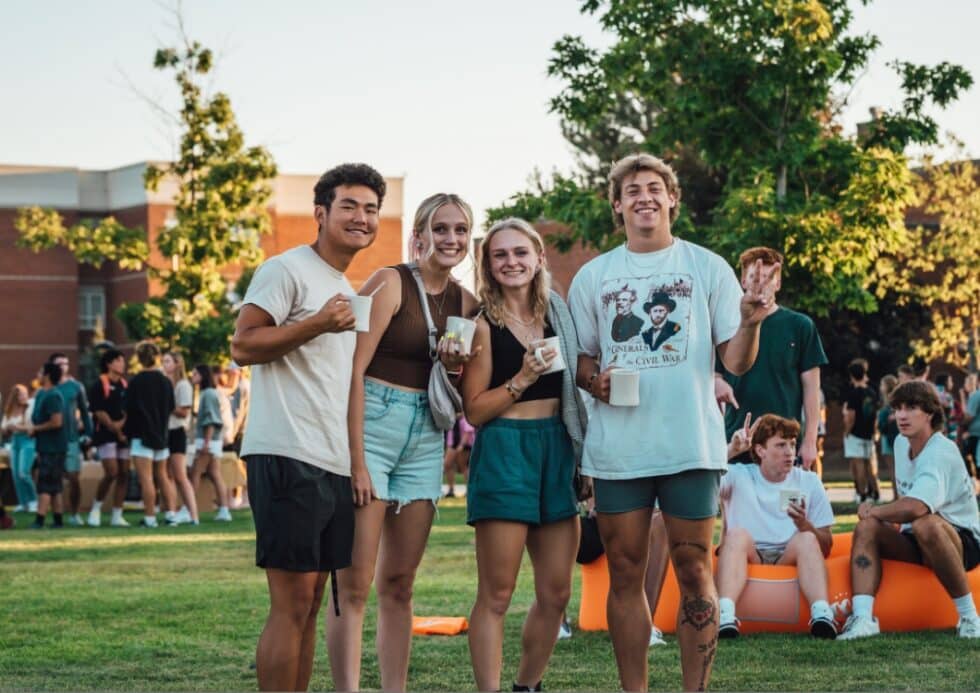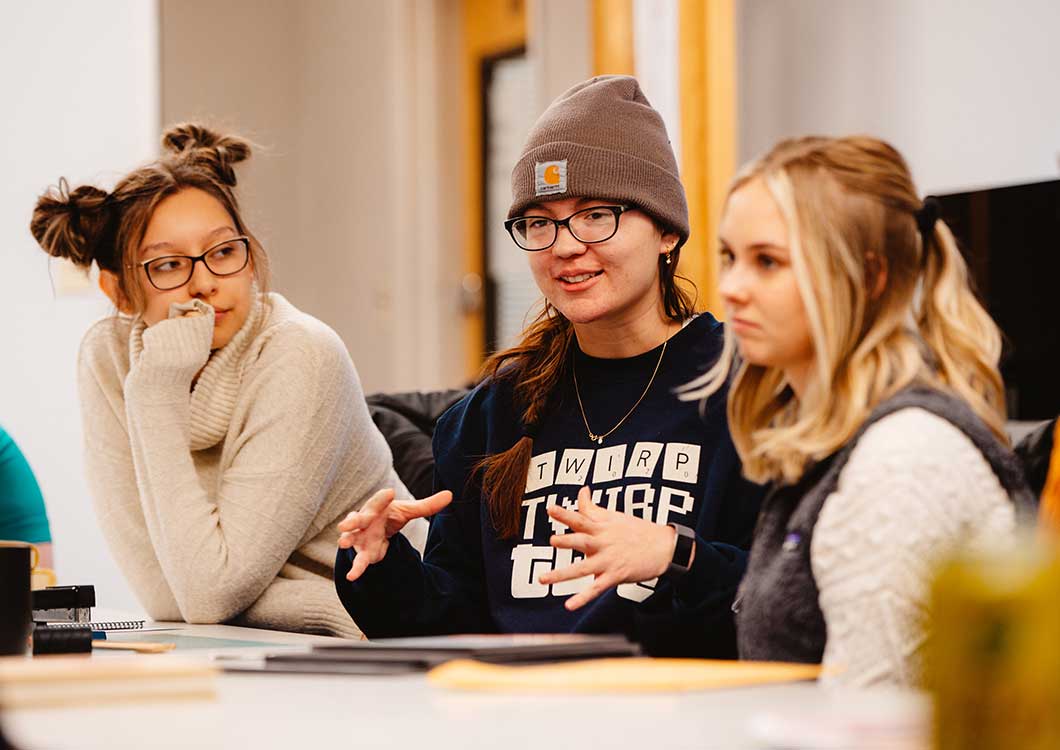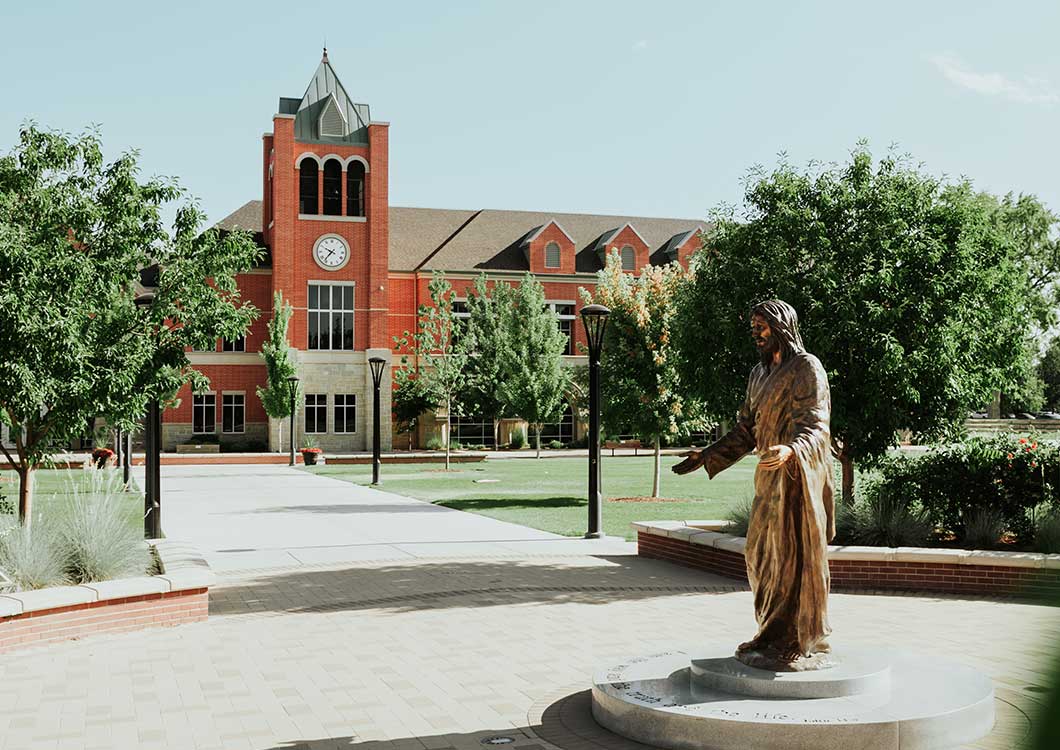2021 Research
Computer Science

JEFF FAIRBANKS
Title: Identifying ATT&CK® Tactics in Android Malware Control Flow Graph Through Graph Representation Learning and Interpretability.
Thesis Adviser: Dr. Dale Hamilton, Dr. Kevin McCarty
Malware affects millions of machines, causing havoc to those it reaches. The dangers and negative impact that malware has inflicted push researchers to find a way to mitigate its effects. Labeling malware within the anti-malware services becomes a challenge in finding the correct Tactics, Techniques, and Procedures (TTP) that each malware implements. The Control Flow Graph (CFG) describes the structure of a program during its execution; this is how a program flows. In reference to malware, it represents the flow of all the internal and external function calls. The current research proposes a novel approach to locating ATT&CK® TTP in a CFG by applying Machine Learning Classifiers on Android Malware. Through these methods, the approach associates the TTP, given by the ATT&CK® Framework with a subgraph of an Android malware CFG. Using Graph Neural Network and SIR-GN node representation learning approach, this methodology processes the CFG and creates a model that classifies the associated TTP. Furthermore, the explanation technique SHapley Additive exPlanations (SHAP), a model agnostic game-theoretic approach to explain any machine learning model’s output and identify the subgraph in the CFG connected with the specific TTP, is implemented. Preliminary experiments indicate approximately 89% accuracy in classifying such techniques.
Jeffrey’s research has been published three times, making him a 3-time peer-reviewed published author. Jeff also presented his research at the SigmaXi, AAAI, and IEEE BigData Conferences. Jeffrey Plans to attend a full-ride scholarship to Penn State to pursue his Ph.D.
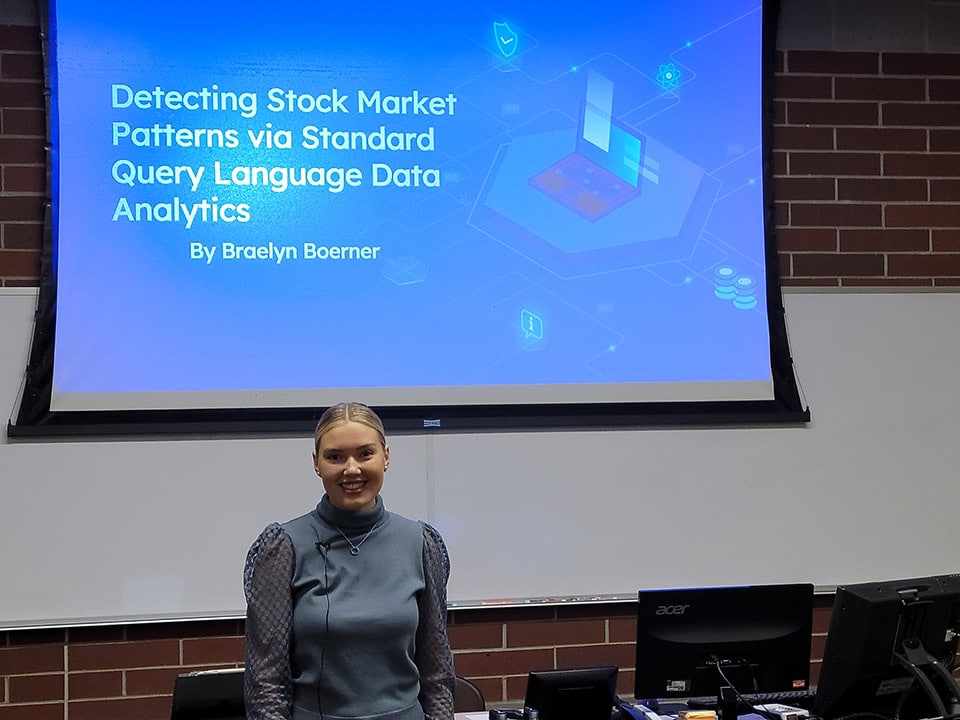
BRAELYN BOERNER
Title: Detecting Stock Market Patterns via Standard Query Language Data Analytics.
Thesis Adviser: Dr. Kevin McCarty
Predictive analysis within the stock market has been a goal of many different banks and large organizations as well as individual traders, as there are substantial monetary gains to be had. The objective of this project is to ask the question: Can one use patterns developed within the stock market to predict the behavior and achieve positive financial margins? When beginning this research endeavor, learning the current patterns for trading algorithms is necessary. Traders often use technical analysis to predict future stocks moves. With this information and a sample database of around nineteen years of stock data, this hypothesis was tested on the Golden and Death Cross. Using specialized SQL queries these patterns were investigated through a series of tables and extensively explored to provide relevant data needed to achieve a prediction method for the trading algorithm. The results demonstrated that the opposite hypothesis, buying on the Death Cross and selling on the Golden Cross, occurred when employing these patterns implemented by this approach.

KAMDEN BROTHERS
Title: Improving Wildland Fire Burn Extent Using Machine Learning to Determine Burnt Pixels Hidden by Trees
Thesis Adviser: Dr. Dale Hamilton
Using a support vector machine (SVM) on imagery obtained from small unmanned aircraft systems (sUAS) has been an efficient and fairly accurate method to calculate burn extent. One problem that needs to be addressed is that the vegetation underneath a tree cannot be seen in drone imagery and will be misclassified due to the tree crown which is obscuring the surface vegetation in the image. This research makes the assumption that if a tree is completely surrounded by burnt pixels, then the vegetation under the tree is burnt as well. An SVM was used to locate burn pixels and a mask region- based convolutional neural network (Mask R-CNN) was used to locate clusters of pixels that represent a tree crown. A program was created to located tree pixel clusters which were completely surrounded in the image by pixels that had previously been classified as burned by the SVM and included the cluster of tree crown pixels as being within the extent of the burn. These methods yielded the best results on fires which had a clear distinction between burn pixels, unburned pixels, and tree crowns. These new methods created will help to calculate a more accurate burn extent from an image to help forest managers rehabilitate burnt forests.

KYLE DUNCAN
Title: Creating a Stock Screener Application Utilizing Machine Learning for Ease of Scanning the Stock Market.
Thesis Adviser: Dr. Kevin McCarty, Dr. Dale Hamilton
The stock market is rapidly changing, most stock screeners or services allow for visualization of stock tickers using charts. These charts are used by stock traders to analyze tickers there are interested in; the issue is a human can only adequately track a few charts at a time. The purpose of this application is to address this issue. Specifically, this project utilizes machine learning to aid in increasing a stock trader’s ability to analyze the stock market. The machine learning model used in the application was trained using a random forest classifier that utilizes historical data. Using an application programming interface from Polygon, the stock screener receives real-time stock quotes which are then prepared and classified by the probability of increasing or decreasing in value. The classified data is then displayed on the user interface in a heat map and updates as soon as new data is classified. Displaying the data as a heat map allows for an intuitive way to quickly analyze many stock tickers. The result of this application is a real- time stock screener tool that can be used to quickly visualize tickers and the probability of each ticker’s movement.

SAMUEL JONES
Title: Wildland Fire Tree Mortality Mapping from Hyperspatial Imagery Using Machine Learning.
Thesis Adviser: Dr. Dale Hamilton
The use of small unmanned aircraft systems (sUAS) for obtaining wildland imagery has enabled the production of more accurate data regarding the effects of fire on forested land. This increase in precision enables accurate detection of trees from hyperspatial imagery, and thus the calculation of canopy cover. When pre-fire data is compared with post-fire data from existing canopy cover products such as the LANDFIRE project, a measure of tree mortality, which is a measure of burn severity, can be calculated from the difference between the two. A mask region-based convolutional neural network (MR-CNN) was trained to classify trees as groups of pixels from a hyperspatial orthomosaic. The tree classification is summarized at 30m in a canopy cover raster. Canopy reduction allows the mapping of burn severity while also identifying where surface, passive, and active crown fire occurred within the observed region. The calculated canopy cover derived from hyperspatial imagery was found to be significantly more accurate when compared with LANDFIRE canopy cover in all observed regions. The hyperspatially derived canopy cover reflected visual observations from respective sUAS imagery and ground truthing.

MARCUS ANTIMIE
Title: Creating a Website as a bridge between clients and their real estate agent.
Thesis Adviser: Dr. Barry Myers
Web development has created a way for businesses to reach millions of clientele and understanding web design has become a leading marketing skill in the advertising industry. Millions of homes are sold each year and a majority of them are sold through databases accessed by real estate agents and clients reach these agents through websites which are designed to inform the client. The purpose of this project is to create a website which is designed to attract clients, utilize forms and outlets for clients to reach the agent, provide information for clients to learn more about the area they are interested in purchasing a home, and to see listings the agents have a direct relationship with the sellers. After 120+ hours of HTML, CSS, JavaScript, meetings with the agent and research on design and development of real estate websites, the result was a website that contained a welcoming home page showing some of the properties sold by the agent, a contact page with a questions form, a listings page with information of homes currently available and homes previously sold, and an about page sharing information and important information when contemplating buying a home in the treasure valley.

ENOCH LEVANDOVSKY
Title: Mapping Burn Extent of Very Large Wildland Fires from Satellite Imagery Using Machine Learning Trained from Localized Hyperspatial Imagery.
Thesis Adviser: Dr. Dale Hamilton
Many wildland fire researchers struggle to get an accurate of burn acreage estimate of a wildland fire due to technology limitations. The effort of the research is to aid wildland fire researchers towards determining the accuracy of mapping out wild land fire using satellite imagery. This research used sUAS wildland fire imagery to determine how accuracy of wildland fire detection is impacted when comparing hyperspatial to sUAS imagery resampled to satellite scale resolution in. This project made the assumption that sUAS burn extent data was accurate. This assumption allowed for the resampled training data, using fuzzy logic control, to be used as accurate satellite resolution training data. The results showed that even though the resolution of imagery significantly drops, the accuracy of the burn extent remains relatively high throughout fires. Although sUAS imagery is deemed to be more accurate given its resolution, acquiring satellite imagery is much more time efficient, cost efficient, and has a consistent history of clean data which serves as a great alternative towards mapping out wildland fire compared to sUAS imagery. This thesis answered the question of how accuracy is impacted when using satellite imagery in replace for sUAS imagery in the case of wildland fires.

CORBIN WHITTON
Title: Using Docker in an Educational Environment to Deploy Services for Computer Scientists and Students.
Thesis Adviser: Dr. Barry Myers
Northwestern Nazarene University Computer Science seeks to educate students in the latest tools and technologies used in today’s computing environments. As these environments are varied, the computer lab has a need for a number of different virtual systems and services in order to cover a wide range of student/professor needs, from Big Data to Cyber Security. My project is intended to extend the university’s current educational capacity via the addition of several new flexible, but highly specific and robust Linux-based environments that utilize Docker to manage and deploy various services. The goal of this project was to create an environment for dynamic learning. To do so, services such as databases, web servers, web IDE’s, git services, and more. First, knowing about Linux and Docker is a must, once we know about Docker and Linux, the project implementation can begin, once it is done, a future roadmap must be devised.
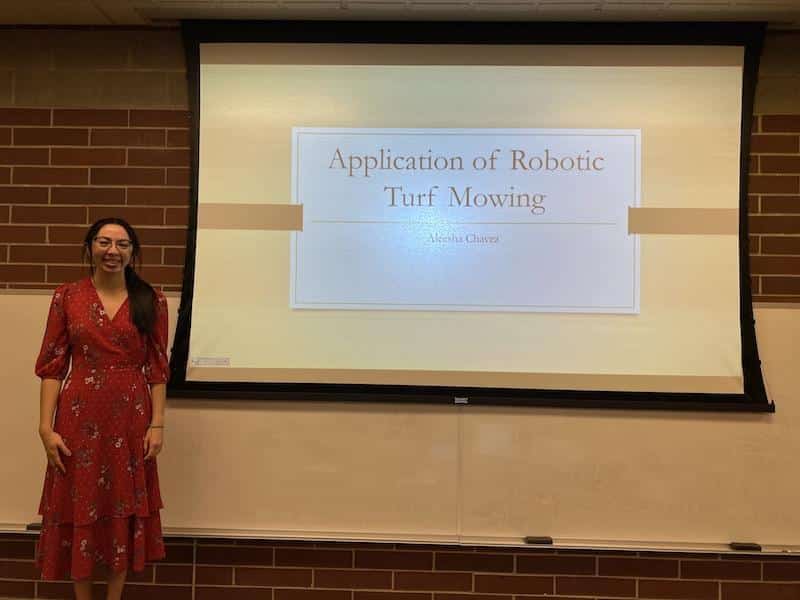
ALEESHA CHAVEZ
Title: Application of a Robotic Turf Mower.
Thesis Adviser: Dr. Dale Hamilton
Traditionally turf fields are mowed two times a week, and cost up to 80 dollars an acre a month, which annually ends up costing a turf company 30,000 dollars and up. Turf companies have to deal with high labor costs, keeping up with maintenance of machinery, and spending precious time on lawn upkeep. A need exists for more efficient ways for companies to mow. The purpose of the project was to create a robotic turf mower that can cleanly mow acres of grass at a time, with no human help, and then to look into the potential benefits and applications of using a robotic mower for turf fields and other large grass fields, instead of mower operated by man. Initial efforts were focused on programming development on a prototype robot model provided by GCR (Green Cut Robotics) Company. Results show promise in precise lawn mowing capabilities with pre-determined coordinates for accurate and straight-line lawn mowing. Further work will need to be done for cases when the GPS has no signal, and for the robot to have the capability of motion detection. Results strongly support the full functionality of a robotic mower that a turf company money and time by cutting operation costs, and having the capability to move outside the turf field domain.

HAYDEN CRABB
Title: Endowment Sorting Computer Program for Small Universities.
Thesis Adviser: Dr. Barry Myers
Patrons to many universities donate large sums of money to the schools and the students through specific endowments. These donations are often what allow students to continue attending the university. Each donor has specific requirements that students must meet in order to receive their money. To find students who meet these requirements and satisfy the donor’s desired specifications, financial aid employees must manually search through a comprehensive database of students to find matches. In order to make this process more efficient and find students for all the endowments, an endowment sorting computer program was developed. The tool developed through this project searches the databases of endowments and students in order to generate a report of who should receive what. Northwest Nazarene University is a smaller private university which utilized the tool as a test of its effectiveness. Through the work of this project the university was able to automate many parts of this process. During this test, the tool saved nearly a week of manual labor time and proved its effectiveness. Additionally, the program has been developed in such a way that it can continue to be effective even as requirements and endowments change, as well as potentially being used at other universities in the future.

JARRET SHEEHAN
Title: Application developed to detect anomalies from data generated by a network.
Thesis Adviser: Dr. Kevin McCarty
Northwest Nazarene University’s network generates a large amount of data every single day. The amount of labor to manually parse through all of that data would take 4 people working 40 hours a week to keep up with the logs. The intention of this project is to train a neural network to automatically parse through the network logs and notify the network team of any anomaly it comes across. First a set of metadata was created from network logs retrieved from NNU’s networking team. Next a parser was built in java to take the logs and parse them into a database built in Microsoft SQL Server. Last a neural network was trained on the retrieved network logs. This network is built using Google’s Python Tensorflow software. Once the neural network finds an anomaly it will send an alert to the networking team.
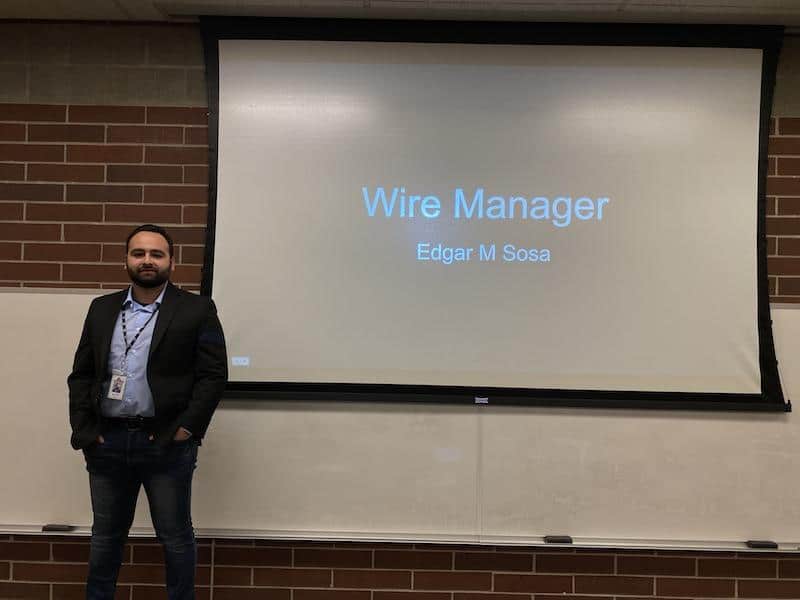
EDGAR SOSA
Title: Application developed to detect anomalies from data generated by a network.
Thesis Adviser: Dr. Barry Myers
Large financial institutions transfer millions of dollars to and from other financial institutions on a regular basis. This same process occurs on a smaller scale in between individuals. Particularly, individuals sending money abroad to other countries. Given that currency is being sent from one country to another, this process is monitored by state and federal laws. These state and federal laws add regulations which require financial institutions wiring money to abide by. The Wire Manager program implements simple but efficient tools to help combat money laundering and prepare for company audits. Money laundering prevention can be challenging for small businesses that do not have enterprise-class software to combat this style of criminal activity. Wire Manager facilitates money- laundering prevention by providing a single software system where wire transaction data can be stored and analyzed by the application’s built-in tools. Wire Manager’s tools include multiple parameter filter searching, background process analysis of potential money laundering cases (based off of user-provided data), a flagging system which aids employees in identifying potential criminal activity, and persistent profile note-keeping used to communicate information about potential threats within an organization.

ETHAN MCPHERSON
Title: Mobile application for sending and tracking basketball workouts while a player is in the off season.
Thesis Adviser: Dr. Dale Hamilton
Mobile devices are becoming more prominent in the world, due to their easy accessibility. In the world of sports, this means that nearly every athlete has access to a smartphone when they go to work out. This project is intended to help collegiate athletes reach their full potential for sport specific workouts, as well as strength and conditioning. The main problem that this project sought to solve was the ability for both the IOS and Android platforms to have a place where they would receive the same information with no disconnect, eliminating a need for athletes to use a certain platform. The next largest task was to give coaches the ability to send workouts to players on their roster. Finally, the last part of this project was to create a way for players to track their personal workouts to see their growth in the off season. Future work includes data calculations to give workout suggestions to athletes and help them improve their game even further.

TELAH DICKERSON
Title: Front-end Web Development for Managing Missionary Teams.
Thesis Adviser: Dr. Barry Myers
Missionary work is an integral aspect of practicing Christians globally. Part of that missionary work for regional coordinators is to be out traveling on a near-daily basis. Sometimes on those travels, they are approached with project proposals and teams volunteering their sets of skills. If they have no way to record and coordinate projects and team details given to them on the go, then management can become problematic. As a solution to this problem, Mission2Go was developed. As part of Mission2Go’s foundational development, a server-side database was created. Although, a web application is not complete without an intuitive, user-friendly client side. Using HTML, CSS, and JavaScript, a user can navigate the application to view, edit, and delete all or certain projects, teams and their details, budget, project assignment, and other important information. When Mission2Go is finally deployed onto a server, it will considerably improve the work of regional coordinators and many other personnel.
